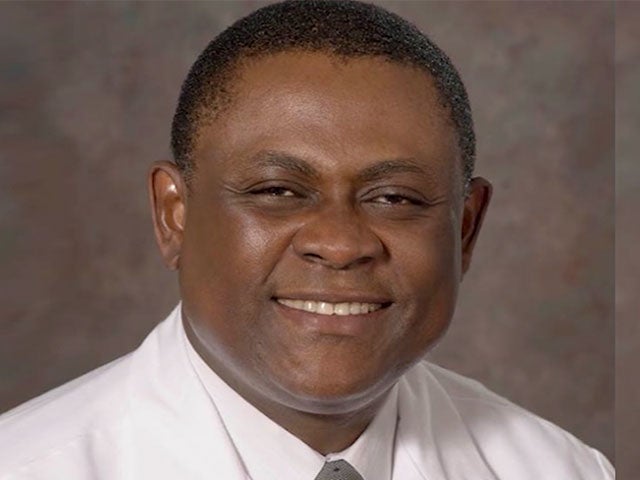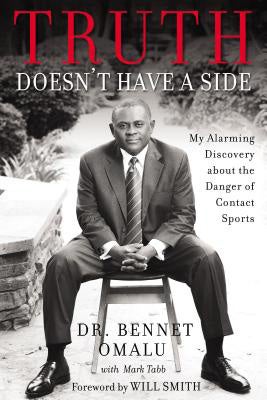Protecting Kids from the Dangers of Concussions
DISCOVERING CTE
Bennet Omalu graduated from the University of Nigeria's medical school. He continued his training in the United States. While working in the Allegheny County coroner’s office in Pittsburgh in 2002, Dr. Omalu examined the body of Mike Webster, a former pro football player with the NFL's Pittsburgh Steelers. Webster had died of a heart attack at age 50, but had been showing signs of unstable behavior before his death.
Dr. Omalu discovered clumps of tau proteins, which impair brain function upon accumulation. The condition was similar to "dementia pugilista," a degenerative disease documented decades earlier in boxers. Dr. Omalu named the condition Chronic Traumatic Encephalopathy (CTE). He published a paper called called "Chronic Traumatic Encephalopathy (pronounced en-seph-full-OP-athy) in a National Football League Player" to the medical journal Neurosurgery. However, the NFL's Mild Traumatic Brain Injury (MTBI) Committee demanded a retraction. Instead, Dr. Omalu examined Terry Long, another former player who had committed suicide at age 45. Long displayed the same buildup of tau proteins so Dr. Omalu published a follow-up paper to Neurosurgery documenting his discovery. The MTBI Committee discredited Dr. Omalu's research and refused to acknowledge a connection between football and brain damage in former players.
Dr. Omalu continued to make his findings known and raise awareness about CTE. Despite heavy opposition, Dr. Omalu eventually gathered enough evidence and support to force the NFL to make concessions. His work led to an overhaul of the MTBI and changes to the NFL rules that enhanced safety. NFL Players are now fined for hits to the head and neck area.
Dr. Omalu says that in the face of wealthy organizations like the NFL, the NHL, and the WWE, it was his faith that enabled him to keep going. “I saw myself in Mike Webster,” said Dr. Omalu. “I promised him as a brother of Christ that I would vindicate CTE. What kept me going when I discovered CTE was Colossians 1 v. 15-20. It says that God is pre-eminent in all things. That everything was made through him for him and in him, both the visible and invisible. If I profess God, why should I be afraid of principalities of this world, and powerful people like the NFL?” He also found strength in Ephesians 1:20-22 and 6:10-17, which talk about the strength that Christians find in the victory of God. He knows that God helped him to face industry giants and reveal the truth.
TRUTH DOESN’T HAVE A SIDE
Dr. Omalu believes it is important that we keep our children safe. One way to do that is to prevent them from playing high impact sports like football, hockey, wrestling, and rugby. He says allowing them to play can put their intelligence at risk. A child can suffer permanent brain damage after playing just one season of football, even if there isn’t a concussion. “Significant damage can happen any time and at any age. We do not know the exact blow-or how many blows- that will cause permanent brain damage. Anyone who plays football has a 100% risk exposure to permanent brain damage. There is no such thing as a safe blow or impact to the human head, just like there is no such thing as safe cigarette smoking.”
Despite many efforts to make contact sports safe, Dr. Omalu asserts there is no way to modify contact sports to increase safety. Since CTE results from repeated blows to the head, every blow to the head puts the player at risk of developing CTE, whether or not a concussion is present. Although many people feel helmets will keep players safe, Dr. Omalu says helmets only protect the head from abrasions, contusions, and lacerations to the face and scalp, fractures of the skull, and bleeding inside the skull. However they don’t prevent the brain from bouncing around inside the skull and impacting the inner surfaces, which is the cause of CTE.
One of the most dangerous characteristics of CTE is that it can show up at any age. A current player might see signs immediately, or might not see evidence of damage until decades after he stops playing. Dr. Omalu has seen CTE in teenagers and athletes in their early twenties, but also men and women in middle age. Symptoms include loss of memory, impaired ability to study or learn, inability to engage in complex, derivative, or extrapolative reasoning, and impaired language capacity. Behavioral symptoms can include inability to focus, tendency to engage in criminal and violent behaviors, paranoid behavior, and increased tendancy to abuse drugs and alcohol.
Dr. Omalu says many sports are brain friendly such as track and field sports, badminton, volleyball, table tennis, baseball, basketball, swimming, and kick-only, less-dribble soccer. In the future, he hopes only adults, and no children, will play the high impact, high contact, collision sports.





